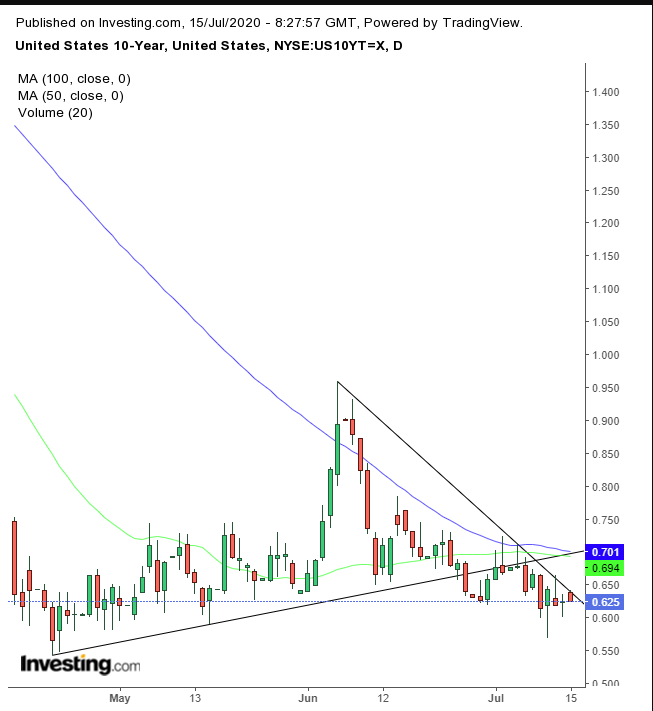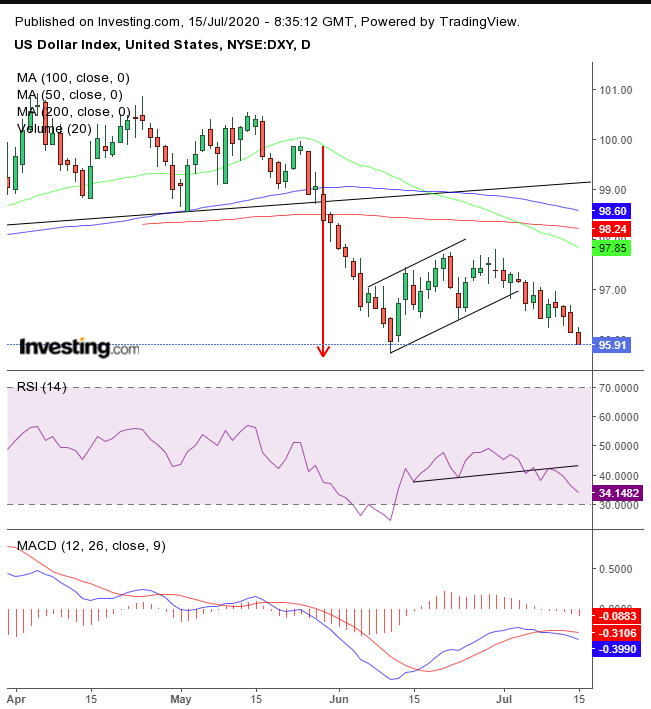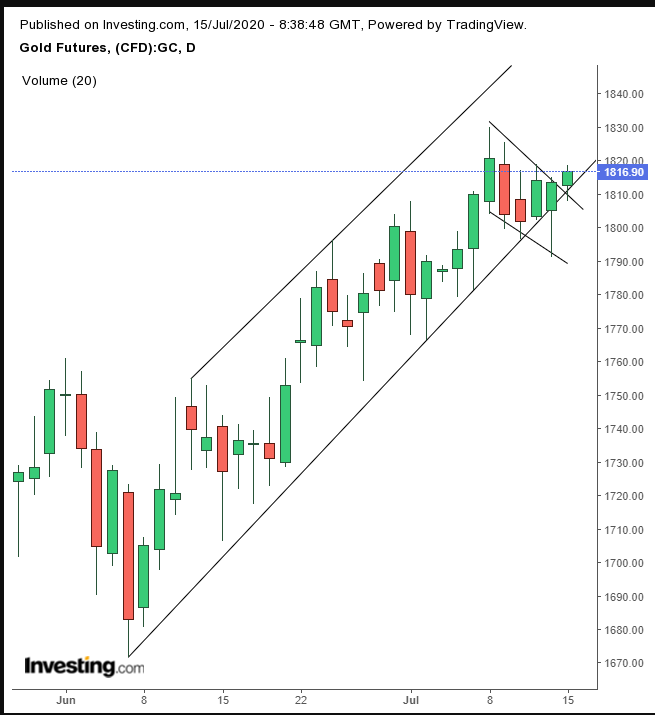- Greenback weighed down by unchecked fiscal policy and technicals
- China stocks underperform after sanctions and rumors of bank collapses
Key Events
US futures for the S&P 500, Dow Jones, NASDAQ and Russell 2000, along with most global stocks were higher on Wednesday as hopes for a coronavirus vaccine soothed investors, offsetting soaring COVID-19 caseloads, even outside of US hotspots. Adding to the negative news, US-Sino tensions escalated over Washington's sanctions imposed on China because of its recent crack down on Hong Kong.
The US dollar slump continued, gold struggled and oil pushed back over $40.
Global Financial Affairs
US futures jumped after new details, released after the US close, about Moderna's (NASDAQ:MRNA), experimental coronavirus vaccine were announced, which researchers said "reinforced their decision to take the shot into a large, decisive clinical trial scheduled to start in late July."
Contracts on the four major US indices were all in positive territory this morning, led by those on the Russell 2000, up 1.6%, at the time of writing. NASDAQ futures lagged, up just 0.5%. It's an extension of the tech-heavy index's recent underperformance, after the benchmark was responsible for yanking markets through continuous highs.
Still, like futures on the remaining major averages, NASDAQ futures opened significantly higher on Wednesday.
The Stoxx Europe 600 Index accelerated, boosted by leisure and travel firms, two sectors that have, perhaps, the most to gain from a medical solution that could conquer the virus, which has kept people locked down at home.
This morning's Asian session was mostly green, though Chinese shares struggled. The mainland's Shanghai Composite suffered a 1.6% selloff, after the US raised the stakes in the diplomatic standoff with its biggest trading partner.
President Donald Trump signed a bill that would penalize banks doing business with Chinese officials who were responsible for the new security law in Hong Kong. A second theme pressuring Chinese shares on Wednesday are rumors of local banks collapsing, which are apparently being fueled by social media.
Australia’s ASX 200 surged 1.9%. It was the Aussie index's best day in a month. All sectors moved higher, but mining, health care and tech stocks were the biggest gainers. Positive sentiment toward the upcoming earnings season was the apparent cause for the rally.
On Tuesday, US equities soared during the New York session, jumping to a five-week high, the biggest boost in over a week, as investors kept their focus on earnings, while ignoring news of spiking virus cases in additional US locations. Energy, materials and industrials led the rally in a late session turnaround.
Yields, including for the 10-year benchmark Treasury, were flat.

They gave up an attempted advance, after meeting with the downtrend line since the June 5 high.
The dollar decline continued for a fourth consecutive day fourth day, but it doesn’t seem to us that this occurred because of its safe haven status diminishing amid a global risk-on mood.
A major reason its considered a safe asset is it is the currency of US Treasurys. However, as noted above, demand for US bonds remained steadfast. As well, both the yen and gold rose, contradicting the supposition that havens should fall when risk appetite increases.
Finally, this is the USD's fourth drop in row, also when the market mood was risk-off. Perhaps, the dollar is suffering from unchecked fiscal policy. And, of course, for an additional explanation, there are the technicals.

The dollar is retesting the June 10 low, the bottom of a rising flag, bearish within the downtrend, with multiple indicators such as a death cross, weakening momentum via the RSI and overall price deterioration as seen in the MACD, all weighing on the June 10 support.
We have been bullish on gold for months, though we did recently warned that the precious metal may incur a profit-taking dip before moving higher.

However, yellow metal's jump earlier today may have completed a falling flag, bullish within the rising channel. Though gold is down as of time of writing, if bulls manage to stay at these prices, we expect a further rally with no pause at this point.
Oil climbed on a major inventory drawdown as reported by the American Petroleum Institute Tuesday, compounded by optimism that the possibility of a COVID-19 vaccine would return airplanes to the sky and cars to the roads.
However, the price of WTI remained blow the congestion levels since June. The MACD and RSI are naturally still bearish, with the 200 DMA looming above, as a single day move won’t change the overall technicals.
Up Ahead
- The EIA crude oil inventories report will be released later today.
- China releases second-quarter GDP on Thursday, as well as key economic indicators for June.
- The European Central Bank meets to set monetary policy on Thursday, with President Christine Lagarde holding a virtual press conference afterward.
Market Moves
Stocks
- Futures on the S&P 500 increased 0.6%.
- The Stoxx Europe 600 Index gained 0.8%.
- The MSCI Asia Pacific Index increased 0.9%.
- The MSCI Emerging Markets Index climbed 0.4%.
Currencies
- The Dollar Index fell 0.3% to 95.89.
- The euro was little changed at $1.1401.
- The British pound gained 0.3% to $1.2591.
- The Japanese yen strengthened 0.1% to 107.13 per dollar.
- The offshore yuan strengthened 0.1% to 7.0017 per dollar.
Bonds
- The yield on 10-year Treasurys was unchanged at 0.62%.
- The yield on two-year Treasurys was unchanged at 0.16%.
- Germany’s 10-year yield gained less than one basis point to -0.45%.
- Britain’s 10-year yield rose one basis point to 0.157%.
- Japan’s 10-year yield fell less than one basis point to 0.03%.
Commodities
- West Texas Intermediate crude gained 0.2% to $40.51 a barrel.
- Brent crude was little changed at $43.09 a barrel.
- Gold weakened 0.1% to $1,808.03 an ounce.
